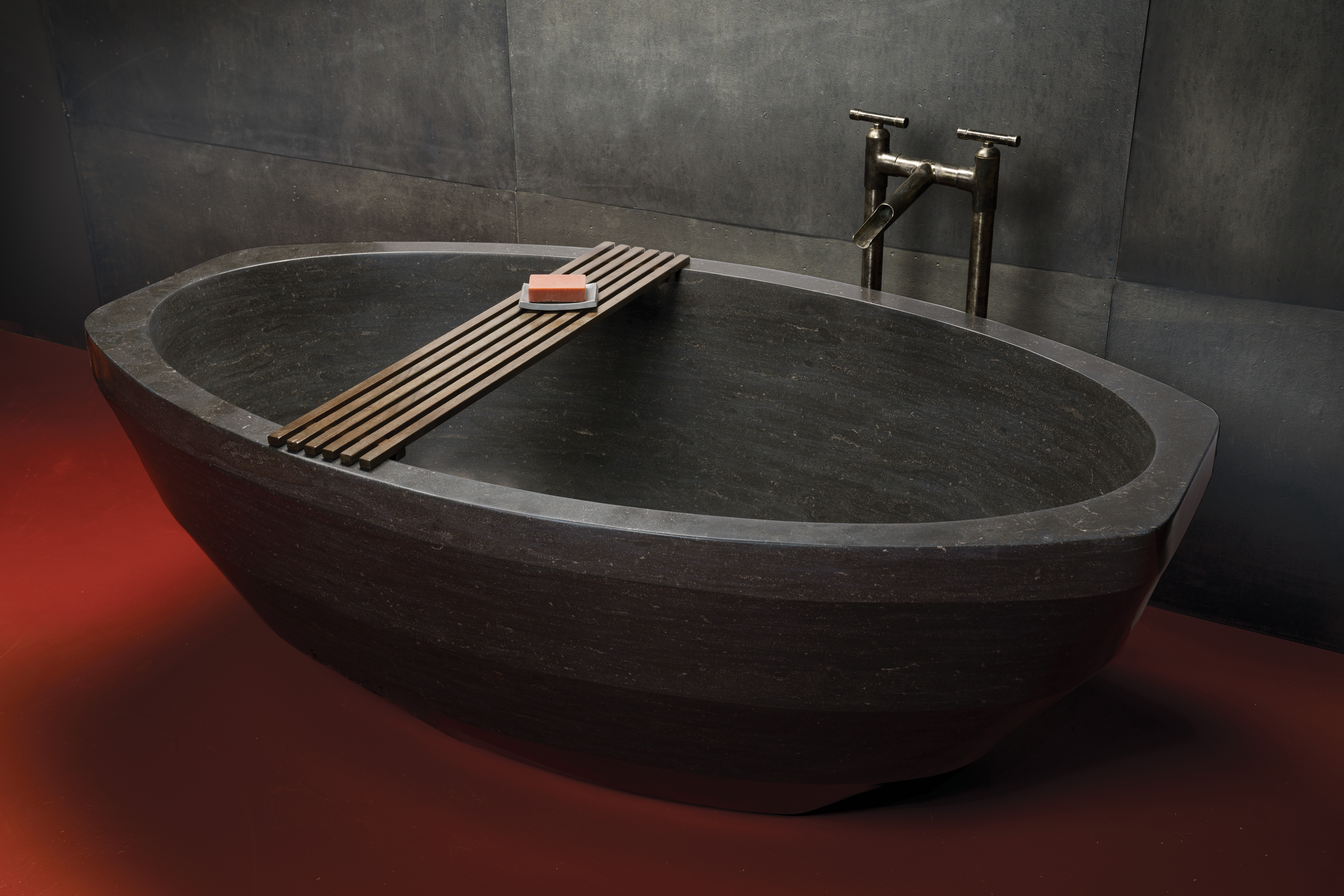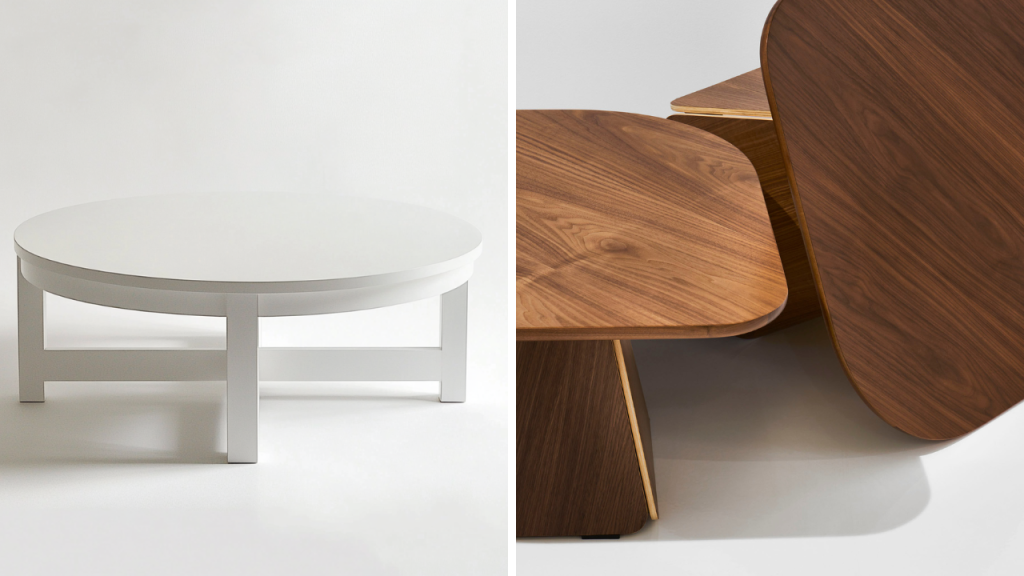The Extended Entry Deadline for Architizer’s 2025 A+Product Awards is Friday, February 21st. Get your brand in front of the AEC industry’s most renowned designers by submitting today.
A few years ago, it was all about marble accents and rose gold everything. Then came the reign of “cottagecore,” with its whimsical florals and vintage trinkets. And somewhere in between, minimalism got redefined at least five times. It’s not that trend cycles are anything new — different styles have always come and gone, only to resurface years (or decades) later.
But today, we’re living in a world of hyperspeed trends. Thanks to social media, what’s “in” one day might be “out” by the next (I’m sure that even Heidi Klum didn’t mean it that literally). This constant churn of aesthetics has created a relentless cycle of overconsumption, bleeding into every corner of our lives. In the architecture world, interior and furniture design, in particular, have become casualties of this trend-driven mindset.
The impact is stark. Back in the 1960s, Americans sent an average of 2.5 million tons of furniture to landfills annually. By 2018, that number had soared to 10 million tons, according to the Environmental Protection Agency (EPA). The pandemic only amplified the problem, with furniture sales surging by over $4 billion between 2019 and 2021. The problem isn’t just the amount sold, but the fact that these pieces are likely not going to make it to the end of this decade.
So how did we get here? On one hand, it’s a story of overconsumption fueled by constantly shifting trends. On the other, it’s about the furniture itself: mass-produced, cheaply made and designed to keep up with fast-moving consumer demands rather than being designed and built to last. This blog dives into the roots of fast furniture, its environmental and cultural costs and how embracing thoughtful, durable design can help break the cycle.
The Rise of Fast Furniture: From Function to Fad
Historical Context: A Shift in Manufacturing
The rise of globalization, particularly the U.S.-China trade agreement in the late 1990s, reshaped industries across the U.S., with furniture manufacturing among the hardest hit. Job losses in labor-intensive sectors like furniture-making were stark, with competition from cheaper imports driving long-term unemployment in trade-exposed regions. The impact of these shifts was not just economic but structural, transforming the way furniture was produced and consumed.
The mass production of furniture is not a new phenomenon. Take mid-century modern pieces, for example. Yes, they were produced on a large scale, but they were crafted with materials and techniques that prioritized durability and timeless design. Solid wood, thoughtful joinery and metal accents made these pieces not only sturdy but also adaptable to changing tastes. The difference lies in the materials: back then, furniture was built to last, whereas today’s fast furniture is built to ship.
Overseas manufacturers prioritized cost efficiency, using lighter, cheaper materials like Medium-density fibreboard (MDF) and particleboard that were easy to ship and assemble. These flat-packed designs minimized transportation costs but came at the expense of durability, leading to furniture that couldn’t withstand years of use. Unlike solid wood, which can be repaired or refinished, MDF and particleboard degrade quickly, leaving consumers with disposable furniture that inevitably ends up in landfills.
This shift had a profound impact on local markets. Domestic manufacturers struggled to compete and furniture production became increasingly polarized: low-cost imports dominated everyday purchases, while high-quality local production shifted to a luxury niche. As a result, the gap widened between accessible, disposable furniture and heirloom-quality pieces, embedding short-term consumption into the industry’s core. Furniture, once a durable good passed down through generations, became nothing more than a fleeting commodity.
The Role of Social Media
If globalization paved the way for fast furniture, social media turned it into an unstoppable phenomenon. Platforms like TikTok, Instagram and Pinterest have unfortunately transformed our homes into stage sets, encouraging users to constantly refresh their spaces to align with the current aesthetic trend. Influencers, with their curated lifestyles, play a central role, promoting “hauls” and “must-have” items that normalize overconsumption and drive the relentless pursuit of perfection (which, we should probably know by now, is an illusion).
Algorithms amplify these trends, making them inescapable. The pressure to stay relevant online means consumers feel compelled to redecorate, even if their homes don’t need updating. For impressionable audiences, this cycle reinforces a mindset where furniture and décor are no longer viewed as investments but as disposable props for their social feeds. By glamorizing excessive consumption, social media turns even household essentials into transient status symbols, accelerating the churn of cheap, unsustainable design.
The Appeal of Cheap and Convenient
Retailers like Wayfair, IKEA and Amazon have mastered the art of convenience, offering fast shipping and low prices that cater to fast furniture’s primary demographic: young consumers seeking affordability and immediacy. Need a stylish desk delivered tomorrow? Or a trendy chair for under $200? These retailers deliver, but the hidden costs are steep.
Low prices are achieved by cutting corners — using thin veneers, lower-quality foam and flat-pack designs that are easier and cheaper to ship. While these products appear modern and functional, their lifespans are short and they often can’t be repaired or recycled. This disposability creates a vicious cycle: furniture breaks down quickly, prompting consumers to replace it with equally short-lived items.
Breaking the Cycle: The Case for Quality and Meaningful Design
Seyun Collection by Zaha Hadid Design, Jury Winner, 2024 A+Products Awards, Residential Furniture. Photo by Masaaki Inoue
All that said, it’s easy to see why fast furniture dominates today’s market. It’s affordable, readily available and aligns with our transient lifestyles — people move more often and homeownership feels out of reach for many. But while the convenience is undeniable, the trade-offs are significant: short lifespans, disposable designs and the environmental toll of endless replacements. It begs the question: Can we escape this cycle without sacrificing accessibility and affordability?
High-quality furniture may not always be accessible upfront, but its long-term value is hard to deny. A well-crafted chair or a solid wood table can stand the test of time, often becoming a fixture in a home for decades rather than years. These pieces prioritize timeless design over fleeting aesthetics, proving that durability and style aren’t mutually exclusive.

Facet Bathtub by Stone Forest, Popular Choice Winner, 2024 Architizer A+Product Awards, Fixtures & Fittings – Bath
As consumers, choosing quality over quantity is one of the most impactful ways to break free from this cycle. Investing in durable, repairable furniture doesn’t just mean fewer replacements — it also means developing a deeper connection to the spaces we inhabit. For those on tighter budgets, thrifting and vintage markets offer alternatives that combine character with sustainability. A secondhand table, restored or customized, can become a unique centerpiece that’s both practical and personal.
Approaching furniture not as disposable decor but as an integral part of our lives helps shift the narrative from trends to meaning. Supporting sustainable brands, opting for modular systems that adapt to changing needs or repurposing older pieces are ways we can align our choices with longevity and individuality. Collectively, these actions create a tendency of intentional living — one where the choices we make have a positive impact on both our lives and the environment (poetic, but true).
What Can Architects Do?

Fold occasional tables by Keilhauer, Finalist, 2024 Architizer A+Product Awards, Contract Furniture. Photo by Christopher Barrett
As architects, our influence extends beyond the walls we design. We have the power to guide clients toward more sustainable, enduring choices — not just in the materials we specify but in the furnishings we recommend. This means prioritizing high-quality pieces, whether they come from sustainable brands or vintage markets and educating clients about the long-term value of such investments.
Our role also involves advocating for thoughtful consumption. Featuring timeless designs, like those highlighted in Architizer’s A+Product Awards for example, allows us to demonstrate that style and substance can coexist beautifully.

Beam Lounge Collection by Nienkamper, Popular Choice Winner, 2024 A+Products Awards, Contract Seating
Ultimately, our responsibility as architects is to create environments that resonate beyond trends: spaces that reflect the values and significantly improve the lives of their inhabitants.
At the end of the day, by promoting quality over quantity and sustainability over disposability, we help bring meaningful design closer to people. And after all, isn’t that what the architectural profession is all about?
The Extended Entry Deadline for Architizer’s 2025 A+Product Awards is Friday, February 21st. Get your brand in front of the AEC industry’s most renowned designers by submitting today.

